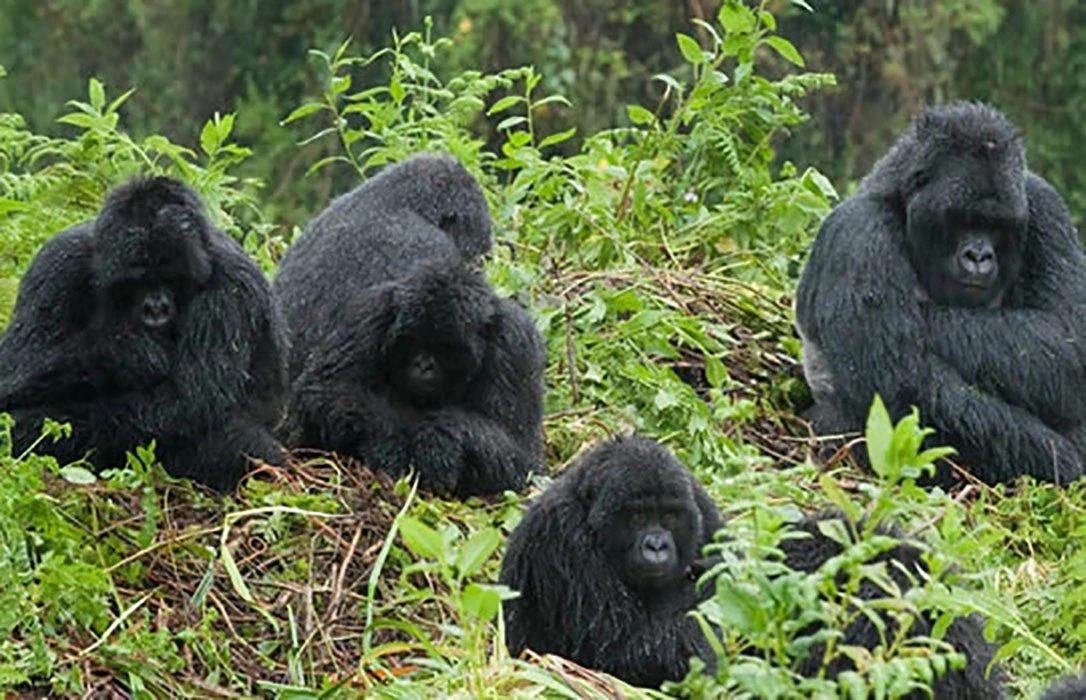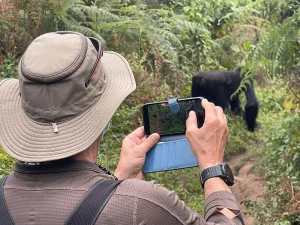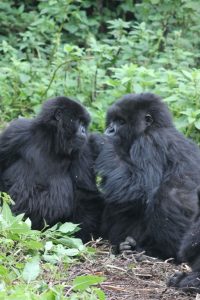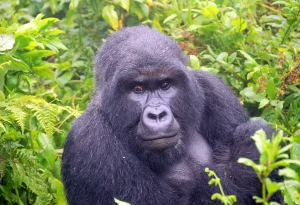The History of Gorilla Tourism in Africa
The most popular experience for travelers on African safaris who combine their vacations with big 5 game safaris is gorilla tourism. Africa sees a large number of visitors each year who come to view mountain gorillas and other gorilla subspecies, such as the Eastern and Western lowland gorillas. The goal of protecting mountain gorillas in the wild has been pursued for more than a century. In order to guarantee the survival of these apes both now and in future generations, numerous conservation organizations and park officials have collaborated. The History of Gorilla Tourism in Africa
The history of mountain gorillas begins in 1902 when German captain Robert Von Beringe, the first European, noticed the primates on the slopes of the Sabyinyo Mountains. They were given the name Gorilla gorilla beringei by Matschie in 1903.
American naturalist Carl Akeley persuaded his Majesty Albert, King of Belgium at the time, to create Albert National Park in 1925. This was Africa’s first park to be created, and it included what is now Volcanoes National Park in Rwanda and Virunga National Park in the Democratic Republic of Congo.
The Complete History of Gorilla Travel
The 60s
The Volcanos National Park was split into two sections following the Belgian Congo’s [later known as Zaire] independence in 1960. The Congo’s Virunga National Park and Rwanda’s Volcanoes National Park.
American Zoologist Dian Fossey started her first extensive research on the wild gorillas in Volcanoes National Park in 1967. It was successful where the gorillas had become accustomed to humans.
The Rwanda Office of Tourism and National Park Development were established in 1973 and began enacting new legislation for Rwanda that governed wildlife hunting and national parks.
The 70s
The primary focus of mountain gorilla history during the 1970s–1980s was preventing poaching and calculating the population. The saddest moment ever was when Silverback Digit and the other five guerillas were killed at Volcanoes National Park in 1978. Nonetheless, it contributed to a global concern for gorilla survival. Digit’s Tomb is still accessible to visitors at the former Karisoke Centre, which is next to Dian Fossey’s grave.
In 1973, the first attempt was made to connect gorilla conservation with tourism at Kahuzi Biega National Park in Dr. Congo (then Zaire).
After being gazetted for the first time in 1970, the park was further expanded to 6,000 square kilometers in 1975. The first gorilla trekking trip debuted in 1973. Later, the repercussions of human-gorilla encounter were not sufficiently studied or experienced, and the “gorilla rules” were still unclear.
In 1979, the Mountain Gorilla Project
In the history of gorilla conservation, the Mountain Gorilla Project in 1979 marked a sea change. It adheres to an agreement between the Rwandan government and a group of private groups with an interest in protecting the environment, including the Fauna and Flora Preservation Society [FFPS], WWF, and the African Wildlife Leadership Foundation [AWLF].
The goal was to improve gorilla conservation by combining anti-poaching measures with gorilla tourism and education. Local and national political sentiments might shift in favor of gorillas if they could provide jobs and income from tourism.
Groups 11 and 13 of the gorillas at Karisoke were chosen to begin a “habituation” exercise before tourist activities began. Due to certain gorillas’ animosity toward people and their distance from the trekking starting point, other families were not taken into consideration.
In particular, Group 11 had four infants at the time and a very placid silverback named Stilgar. With a few Kigali locals, the first experimental trekking began in October 1979. In November 1979, European visitors from Trans Africa became the first non-resident tourists to see the gorillas.
The first gorilla trekking trip
Each gorilla family could only have six persons on the initial gorilla trekking excursion, and visitors could only spend an hour with them. If the visit was prolonged, the silverback would become hostile toward people. A permit costing USD 20 was purchased by the first gorilla trekkers.
Guidelines that were later simplified and ethical gorilla trekking were established as a result of gorilla trekking. Stated differently, the restrictions limit what people may and cannot do when they see gorillas in their natural habitat. The gorillas’ own responses to human encounters are also reflected in them.
The influx of tourists to Volcanoes National Park quickly helped to improve Ruhengeri’s lodging options. The same villagers who would be murdering the mountain gorillas were hired for positions like tracking, patrolling guards, rangers, and trekking guides thanks to gorilla trekking.
The 80s
Dian Fossey was murdered in her cabin at Karisoke Research Center on December 27, 1987, by unidentified intruders; her cause of death is still unknown. She was laid to rest by her beloved Digit silverback in a cemetery she established for the gorillas at Karisoke. Following her passing, the 1989 mountain gorilla population census got underway. A total of 644 gorillas were discovered, including about 324 in the Virunga Conservation Area and 320 in the Bwindi Impenetrable Forest.
The 90s
The Ugandan government gazetted the Bwindi Impenetrable National Park in the 1990s. And the Uganda Wildlife Authority took over its management in 1991. However, wildlife tourism was put on hold for a long time because of civil wars. Uganda didn’t reopen its jungles to the world until much later.
The Uganda Wildlife Authority’s initial assignment was to conduct a three-year gorilla habituation process for the Mubare Gorilla Group [Buhoma]. Gorilla tourism was made possible by Ruhondeza, the lead silverback, who demonstrated remarkable human-interaction skills. In 1993, the Mubare family was first made accessible to gorilla tourists
Today’s Gorilla Tourism
Today Less than 100 gorilla permits are granted to trekkers every day by the Rwanda Development Board. Ragers are only allowed to lead eight members of each gorilla family. In Rwanda, gorilla tourists can choose from 12 different gorilla populations. Research will be conducted on the remaining six gorilla groups. The History of Gorilla Tourism in Africa
There are currently 19 habituated gorilla groups in Uganda [2021] that is accessible for gorilla tourism in Mgahinga National Park and Bwindi Impenetrable National Park. Two gorilla families [Rushaga Sector] are available for gorilla habituation experiences, while three gorilla families are set aside for study.




